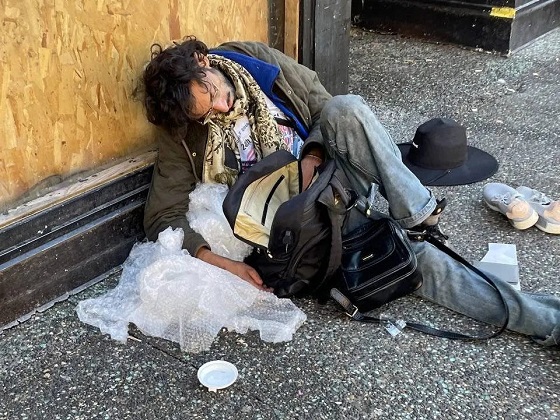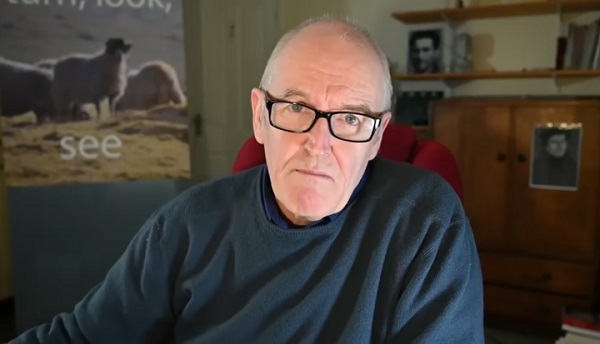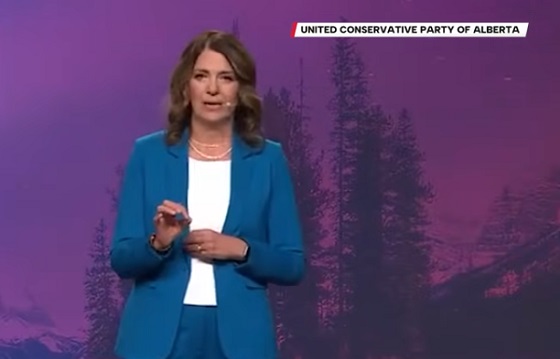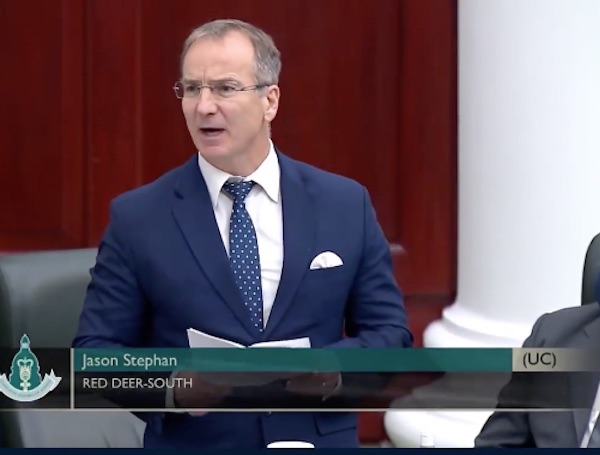Frontier Centre for Public Policy
To Truly Help Indigenous Communities Prosper, We Must Put the Economic Horse Before the Political Cart

From the Frontier Centre for Public Policy
Conservative leader Pierre Poilievre has surprised a lot of people by placing a real emphasis on his party’s relationship with Indigenous peoples. Not only has he recruited high-profile Indigenous politicians like Ellis Ross and Chief Billy Morin to be candidates, but he’s even addressed the annual meeting of the Assembly of First Nations.
As he thinks about how best to translate these efforts of engagement and outreach into a practical policy agenda, he ought to prioritize economic reconciliation over certain political reforms. This is a balance that the Trudeau government has failed to abide by.
In November 2021, Prime Minister Justin Trudeau issued a statement on the 25th anniversary of the final report of the Royal Commission on Aboriginal Peoples (RCAP)—a massive five-volume report containing 440 recommendations covering most areas of Canada’s Indigenous life.
The prime minister proudly stated his government followed through on one RCAP recommendation: In 2017, it established the Department of Crown-Indigenous Relations and North Affairs and the Department of Indigenous Services as separate departments.
Yet his government neglected—like others before it—a much more significant recommendation: the creation of economically viable and eventually self-sufficient Indigenous communities.
The result is that most Indigenous governments in Canada—even self-governing modern treaty governments—are no closer to achieving RCAP’s vision of self-sufficient Indigenous governments.
It reflects a consistent problem in the discourse about advancing progress towards the overall goal of reconciliation. Indigenous activists and scholars too often put the politics of self-government before economics.
They advocate for independent political institutions, but without a realistic economic plan, these institutions will not be free of federal economic paternalism.
They fail to put the political cart behind the economic horse.
Over 20 years ago, Dene leader Stephen Kakfwi told an interviewer that First Nations seeking self-government must first consider their community’s financial viability. No government in the world, he said, provided free housing, free education, and free government. Kakfwi wisely observed that this would not create self-reliant individuals, families, and communities.
So, what will ensure a path toward economic viability for Indigenous communities that leave the Indian Act? Long-term data on Indigenous communities provides answers.
The National Indigenous Economic Development Board (NIEDB)’s flagship Aboriginal Economic Benchmarking Report found a recurring positive correlation between greater control over land and resources and higher socio-economic outcomes.
The NIEDB’s research reveals Canada’s modern treaty process provides the greatest Indigenous economic freedom because it provides the most significant control over land and resources. Modern treaties are land claims agreements signed since the 1970s between the Crown and First Nations, in which Indigenous parties abandon reserves and federal oversight. They involve wide-reaching control over lands and resources and often self-governing institutions.
These agreements provide a favourable investment climate and create greater potential for economic development and growth by instilling certainty over rights to land and resources.
Consider two case studies, one in the U.S. and one in Canada, to understand this fully.
First is the 1971 Alaska Native Claims Settlement Act (ANCSA). The second is the 1984 Inuvialuit Final Agreement (IFA). Both agreements involved Northern Indigenous groups extinguishing rights and title in exchange for cash and full control over lands and resources. Both agreements created arm’s length corporate structures to make sound business and investment decisions for the community.
Through ANCSA, U.S. Congress provided Alaska Natives with a total cash settlement of $962.5 million and title to surface and sub-surface to 40 million acres.
ANCSA turned the Alaska Native communities into for-profit regional and village corporations with legal obligations to generate profits for their shareholders.
Alaska Natives would not allow these entities to become regular corporations. They banned selling and trading shares on the open market. They adopted ancestral restrictions on shareholder eligibility to prevent takeovers.
Alaska Native communities used their revenues to establish a fiscal relationship between all corporations that included resource revenue sharing.
As a result, ANCSA created a significant socio-economic change within the Alaska Native population and shifted from subsistence-based activities toward a more middle-class existence over a few decades.
The corporation’s economic power rested on natural resource wealth (oil and timber). However, wise investment of settlement monies and resource revenues into other businesses and ventures ensures future economic viability.
Now, turning to Canada.
The Inuvialuit of the Western Arctic signed the Inuvialuit Final Agreement (IFA) with the federal government. The IFA created two institutions, the Inuvialuit Regional Corporation (IRC) and the Inuvialuit Game Council to oversee wildlife. The IRC corporate structure encompasses six community corporations.
The Inuvialuit Development Corporation (IDC) was the IRC’s business unit. The IDC invested settlement monies into business ventures within and outside the settlement region, focusing on creating Inuvialuit jobs. The IDC created over 20 subsidiary businesses and joint ventures in seven major business sectors. They invested in construction, manufacturing, environmental services, transportation, tourism and hospitality, real estate, and petroleum servicing.
The Inuvialuit Investment Corporation (IIC) is the IRC’s second subsidiary. IIC protects Inuvialuit funds, earns a five percent long-term return, and manages Inuvialuit corporation investment funds. Inuvialuit Social Development Fund—the non-income generating part of the IRC—provides Inuvialuit housing, health, welfare, education, and traditional language services.
The IFA created significant socio-economic change within the Inuvialuit Settlement Region, paralleling changes within Alaska Native society after the ANCSA. The two communities differ because the promised Mackenzie Valley Pipeline project never materialized for the Inuvialuit while the Trans Alaskan Pipeline did.
One wonders how the Mackenzie Valley Pipeline could have economically improved the condition of the Inuvialuit.
So, can one conclude Indigenous communities cannot achieve economic viability without substantial natural resources? Not necessarily. Indigenous communities without substantial natural resources tend to adopt two other economic development strategies: 1) expanding land holdings, including valuable urban lands; and 2) developing high-value-added, reserve-based businesses and niche industries.
Studies by the Fraser Institute and the C.D. Howe Institute reveal that many First Nations in Canada have access to their own source revenues. A 2016 Fraser study found at least 100 First Nations at that time had access to their own source revenues that exceeded government transfers.
To replicate such successes, Ottawa must fundamentally re-orient its Indigenous policy.
The federal government—in working with First Nations seeking freedom from the Indian Act and reserve system—must develop realistic economic viability plans before signing agreements. Ottawa must place economic success and viability at the centre of its Indigenous policy approach. New agreements must include for-profit corporate structures. Ottawa must provide Indigenous communities with the fiscal tools they need to succeed, including self-taxation powers and the ability to easily expand their land base for economic purposes.
Finally, Ottawa must recognize that future Indigenous economic viability hinges on the future of Canada’s resource economy. Governments must abandon green transition policies that run counter to future Indigenous viability.
First published here.
Joseph Quesnel is a Senior Research fellow with the Frontier Centre for Public Policy
Food
Canada Still Serves Up Food Dyes The FDA Has Banned

From the Frontier Centre for Public Policy
By Lee Harding
Canada is falling behind on food safety by continuing to allow seven synthetic food dyes that the United States and several other jurisdictions are banning due to clear health risks.
The United States is banning nine synthetic food dyes linked to health risks, but Canada is keeping them on store shelves. That’s a mistake.
On April 22, 2025, the U.S. Department of Health and Human Services and the Food and Drug Administration (FDA) announced they would ban nine petroleum-based dyes, artificial colourings that give candies, soft drinks and snack foods their bright colours, from U.S. foods before 2028.
The agencies’ directors said the additives presented health risks and offered no nutritional value. In August, the FDA targeted Orange B and Citrus Red No. 2 for even quicker removal.
The good news for Canada is that Orange B was banned here long ago, in 1980, while Citrus Red No. 2 is barely used at all. It is allowed at two parts per million in orange skins. Also, Canada reduced the maximum permitted level for other synthetic dyes following a review in 2016.
The bad news for Canadians is that regulators will keep allowing seven dyes that the U.S. plans to ban, with one possible exception. Health Canada will review Erythrosine (called Red 3 in the U.S.) next year. The FDA banned the substance from cosmetics and drugs applied to the skin in 1990 but waited decades to do the same for food.
All nine dyes targeted by the FDA have shown evidence of tumours in animal studies, often at doses achievable through diet. Over 20 years of meta-analyses also show each dye increases the risk of attention deficit hyperactivity disorder in eight to 10 per cent of children, with a greater risk in mixtures.
At least seven dyes demonstrate broad-spectrum toxicity, especially affecting the liver and kidneys. Several have been found to show estrogenic endocrine effects, triggering female hormones and causing unwanted risks for both males and females. Six dyes have clinical proof of causing DNA damage, while five show microbiome disruption in the gut. One to two per cent of the population is allergic to them, some severely so.
The dyes also carry a risk of dose dependency, or addiction, especially when multiple dyes are combined, a common occurrence in processed foods.
U.S. research suggests the average child consumes 20 to 50 milligrams of synthetic dyes per day, translating to 7.3 to 18.25 kilograms (16.1 to 40.2 pounds) per year. It might be less for Canadian kids now, but eating even a “mere” 20 pounds of synthetic dyes per year doesn’t sound healthy.
It’s debatable how to properly regulate these dyes. Regulators don’t dispute that scientists have found tumours and other problems in rats given large amounts of the dyes. What’s less clear are the implications for humans with typical diets. With so much evidence piling up, some countries have already taken decisive action.
Allura Red (Red 40), slated for removal in the U.S., was previously banned in Denmark, Belgium, France, Switzerland, Sweden and Norway. However, these countries were forced to accept the dye in 2009 when the European Union harmonized its regulations across member countries.
Nevertheless, the E.U. has done what Canada has not and banned Citrus Red No. 2 and Fast Green FCF (Green 3), as have the U.K. and Australia. Unlike Canada, these countries have also restricted the use of Erythrosine (Red 3). And whereas product labels in the E.U. warn that the dyes risk triggering hyperactivity in children, Canadians receive no such warning.
Canadian regulators could defend the status quo, but there’s a strong case for emulating the E.U. in its labelling and bans. Health Canada should expand its review to include the dyes banned by the E.U. and those the U.S. is targeting. Alignment with peers would be good for health and trade, ensuring Canadian manufacturers don’t face export barriers or costly reformulations when selling abroad.
It’s true that natural alternatives present challenges. Dr. Sylvain Charlebois, a food policy expert and professor at Dalhousie University, wrote that while natural alternatives, such as curcumin, carotenes, paprika extract, anthocyanins and beet juice, can replace synthetic dyes, “they come with trade-offs: less vibrancy, greater sensitivity to heat and light, and higher costs.”
Regardless, that option may soon look better. The FDA is fast-tracking a review of calcium phosphate, galdieria blue extract, gardenia blue, butterfly pea flower extract and other natural alternatives to synthetic food dyes. Canada should consider doing the same, not only for safety reasons but to add value to its agri-food sector.
Ultimately, we don’t need colour additives in our food at all. They’re an unnecessary cosmetic that disguises what food really is.
Yes, it’s more fun to have a coloured candy or cupcake than not.What’s less fun is cancer, cognitive disorders, leaky gut and hormonal disruptions. Canada must choose.
Lee Harding is a research fellow for the Frontier Centre for Public Policy.
Addictions
Manitoba Is Doubling Down On A Failed Drug Policy

From the Frontier Centre for Public Policy
Manitoba is choosing to expand the same drug policy model that other provinces are abandoning, policies that normalize addiction while sidelining treatment, recovery, and public safety.
The New Democrat premier of British Columbia, David Eby, stood before reporters last spring and called his government’s decision to permit public drug use in certain spaces a failure.
The policy was part of the broader “harm reduction” strategy meant to address overdose deaths. Instead, it had stirred public anger, increased street disorder and had helped neither users nor the communities that host them. “We do not accept street disorder that makes communities feel unsafe,” Eby said. The province scrapped the plan.
In Alberta, the Conservative government began shutting down safer-supply prescribing due to concerns about drug diversion and misuse. The belief that more opioids can resolve the opioid crisis is losing credibility.
Ontario Progressive Conservatives are moving away from harm reduction by shutting down supervised consumption sites near schools and limiting safer-supply prescribing. Federal funding for programs is decreasing, and the province is shifting its focus to treatment models, even though not all sites are yet closed.
Yet amid these non-partisan reversals, Manitoba’s government has announced its intention to open a supervised drug-use site in Winnipeg. Premier Wab Kinew said, “We have too many Manitobans dying from overdose.” True. But it does not follow that repeating failed approaches will yield different results.
Reversing these failed policies is not a rejection of compassion. It is a recognition that good intentions do not produce good outcomes. Vancouver and Toronto have hosted supervised drug-use sites for years. The death toll keeps rising. Drug deaths in British Columbia topped 2,500 in 2023, even with the most expansive harm reduction infrastructure in the country. A peer-reviewed study published this year found that hospitalizations from opioid poisoning rose after B.C.’s safer-supply policy was implemented. Emergency department visits increased by more than three cases per 100,000 population, with no corresponding drop in fatal overdoses.
And the problem persists day to day. Paramedics in B.C. responded to nearly 4,000 overdose calls in July 2024 alone. The monthly call volume has exceeded 3,000 almost every month this year. These are signs of crisis management without a path to recovery.
There are consequences beyond public health. These policies change the character of neighbourhoods. Businesses suffer. Residents feel unsafe. And most tragically, the person using drugs is offered little more than a cot, a nurse and a quiet signal to continue. Real help, like treatment, housing and purpose, remains out of reach.
Somewhere along the way, bureaucracies stopped asking what recovery looks like. They have settled for managing human decline. They call it compassion. But it is really surrender, wrapped in medical language.
Harm reduction had its time. It made sense when it first emerged, during the AIDS crisis, when dirty needles spread HIV. Back then, the goal was to stop a deadly virus. Today, that purpose has been lost.
When policy drifts into ideology, reality becomes an afterthought. Underneath today’s approach is the belief that drug use is inevitable, that people cannot change, that liberty means letting others fade away quietly. These ideas do not reflect science. They do not reflect hope. They reflect despair. They reflect a politics that prioritizes the appearance of compassion over effectiveness.
What Manitoba needs is treatment access that meets the scale of the problem. That means detox beds, recovery homes and long-term care focused on restoring lives. These may not generate the desired headlines, but they work. They are demanding. They are slow. And they offer respect to the person behind the addiction.
There are no shortcuts. No policy will undo decades of pain overnight. But a policy that keeps people stuck using is not mercy. It is maintenance with no way out.
A government that believes in its people should not copy failure.
Marco Navarro-Genie is vice-president of research at the Frontier Centre for Public Policy and co-author, with Barry Cooper, of Canada’s COVID: The Story of a Pandemic Moral Panic (2023).
-

 Artificial Intelligence2 days ago
Artificial Intelligence2 days agoGoogle denies scanning users’ email and attachments with its AI software
-

 COVID-192 days ago
COVID-192 days agoFDA says COVID shots ‘killed’ at least 10 children, promises new vaccine safeguards
-

 Alberta2 days ago
Alberta2 days agoNet Zero goal is a fundamental flaw in the Ottawa-Alberta MOU
-

 Addictions2 days ago
Addictions2 days agoManitoba Is Doubling Down On A Failed Drug Policy
-

 Food2 days ago
Food2 days agoCanada Still Serves Up Food Dyes The FDA Has Banned
-

 COVID-192 days ago
COVID-192 days agoThe dangers of mRNA vaccines explained by Dr. John Campbell
-

 Alberta2 days ago
Alberta2 days agoKeynote address of Premier Danielle Smith at 2025 UCP AGM
-

 Artificial Intelligence1 day ago
Artificial Intelligence1 day ago‘Trouble in Toyland’ report sounds alarm on AI toys






